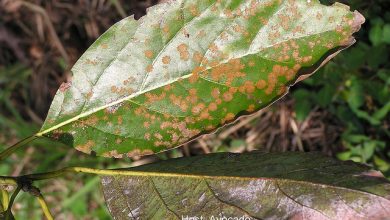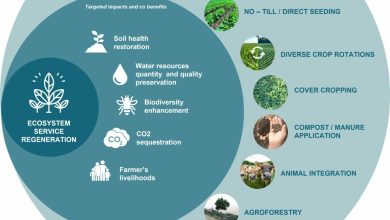What diseases and pests attack the cherry tree? [Identify and Treat]
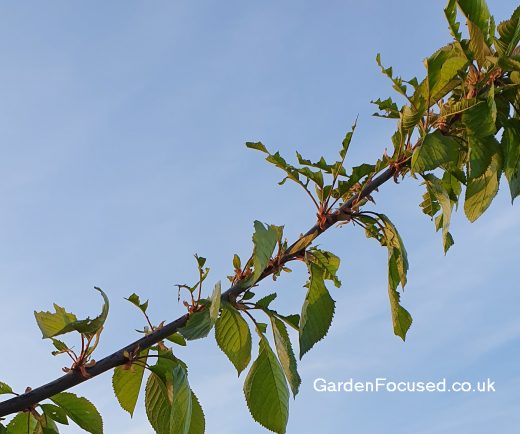
 The pests and diseases of the cherry tree are the headache of any person who is dedicated to planting them.
The pests and diseases of the cherry tree are the headache of any person who is dedicated to planting them.
This type of fruit develops and matures very quickly and this makes attention to diseases mandatory from prevention.
It means that part of the care is aimed at having a good fertilizer and exhaustive care of the entire structure.
If you have the joy of planting cherry trees, then get ready to know how to attack the annoying diseases that want to end your harvest.
Let’s start.
Diseases that affect the cherry tree
anthracnose
Round brown (and sometimes reddish) spots are the main features of this cherry tree disease.
Its action is mainly oriented to the leaves and fruits, preventing the consumption of the latter.
In some very exceptional cases, the disease can attack the stem, but then the spots will appear elongated and not round.
It is important to know that its presence and development occurs in times of spring towards summer.
In addition to that, it is much more stable when the environment is humid, so you should be on high alert under these conditions.
Treatment for anthracnose in the cherry tree:
 As in many other fruit tree diseases, prevention is essential to prevent anthracnose from affecting the harvest.
As in many other fruit tree diseases, prevention is essential to prevent anthracnose from affecting the harvest.
The reason for this is that the corrective capacity is quite limited since it tends to affect the fruit and that condition cannot be eliminated.
So it’s best to make sure the tree is nutrient-fortified and apply a fungicide if appropriate.
To know more: All about the cherry tree fertilizer.
Monilia (Botrytis cinerea)
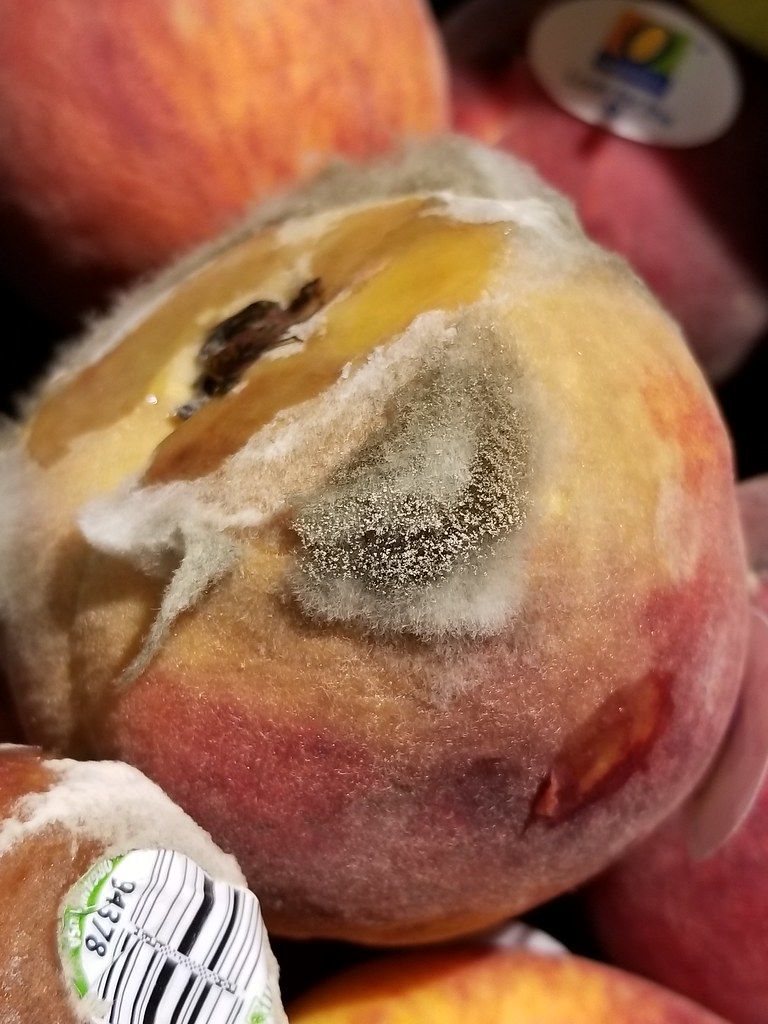
Another of the cherry tree diseases that are more worrying because it attacks the fruits is monilia.
Its main symptom is presenting brown spots on the fruit and flowers, causing them to be lost entirely.
The appearance that it generates at first glance is as if the fruit were rotten, which is why in other spaces it is known as brown rot.
As cherries are small fruits that occur in high quantities, the presence of monilia in a crop can cause significant losses.
The disease is caused by a fungus known as Botrytis cinerea and it is included in the crop through plant wounds.
 Unlike other diseases, the presence of the fungus is easily visible because it creates a whitish powdery layer on the surface of the affected area.
Unlike other diseases, the presence of the fungus is easily visible because it creates a whitish powdery layer on the surface of the affected area.
It also affects vineyards and peach trees.
Treatment for cherry monilia:
The treatment in this case will involve pruning during the autumn period.
It is in this period that the tree tends to discard part of its leaves and this makes it easier to see if there are affected areas.
Another strategy related to this disease is to give it the correct nutrients to strengthen the entire structure of the tree.
Specialists recommend that the fertilizer contain a greater amount of potassium and phosphorus and not so much nitrogen.
bacterial chancre
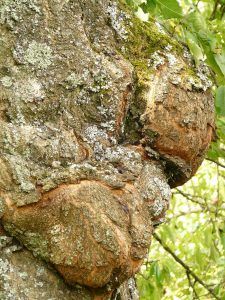 It is a disease that usually lodges in the cankers of the tree’s wood, lasting for many years in a dormant state.
It is a disease that usually lodges in the cankers of the tree’s wood, lasting for many years in a dormant state.
In order for it to have the possibility of affecting the normal development of the plant, it is necessary that some area has a wound through which it can penetrate.
This means that one of the peak moments to prevent the appearance of the disease revolves around autumn, when the leaves fall.
The disease can attack any area of the tree without distinction, but it almost always starts in the flower bouquets with a blackish coloration.
Treatment of bacterial canker in cherry: The bacteria can be treated with commercial products defined for this type of disease.
However, part of the care is through prevention, making a detailed observation of the plant during the fall.
It also becomes positive at the time of pruning and until the fruits begin to form.
Screening
Screening is another disease that hits the cherry tree hard.
This is a disease that attacks the leaves, creating holes in them that in some cases are called perdigonazos.
For these holes to occur, the disease begins by producing pink spots that later darken until the affected part falls off.
When screening is transferred to the fruit, it detracts from the commercial value it could have, making it impossible for human consumption.
It should also be considered that screening can appear for different reasons, such as a bacterium, a virus or a fungus.
Cherry screening treatment: There are copper-based fungicides that work very efficiently in the presence of this type of disease.
And being easy to recognize, it can be attacked before it causes damage to the fruits.
As always, a good fertilization will help the plant to have enough strength to face it.
Having all these diseases and their possible treatments at hand will be key to enjoying a large and excellent quality harvest.
Black knot, Apiosporina morbosa
Symptoms: Elongated swellings (knots) in thepartsof the tree that can reach up to 30 cm in length; Knots are initially olive green with a corky texture but turn black and become hard and brittle; the nodes grow in length each year.
Cause: Fungus. Infections occur on new shoots after rains, and knots develop rapidly in the second year.
Management and control: Prune twig and branch nodes to 8-10 cm below the swelling and remove pruned branches from theorchard.
Remove knots from older branches by removing the knot plus 2 cm of surrounding tissue.
Knot removal is most effective when done in the height of summer. The disease can be controlled by the application of suitable fungicides, if available, during shoot elongation.
Brown rot, Monilinia fructicola
Symptoms: Brown discoloration of fruit skin and internal tissue.
Wrinkled fruit skin; collapsed flowers exuding sap from their bases; tan cankers with dark edges on twigs. There may be gray-brown spore masses on the cankers.
Cause: Fungus: The fungus survives on mummified fruit on the tree, wilted flowers, cankers, and infected twigs.
Cankers on flowers and twigs are promoted by periods of wet weather.
Control and Management: The most effective method at present to control brown rot is the application of suitable protective fungicides, timed to be applied when susceptible floral parts are exposed or after a wet period.
Avoiding overhead irrigation protects leaves and flowers from moisture that promotes disease.
Cultural control methods include: removal of mummified fruit from the tree, pruning of infected branches, and reduction of plant stress by supplying adequate levels of water and fertilizer.
Cherry leaf spot, Coccomyces hiemalis
Symptoms: Small purple-red spotson upper surface of leaves, turning brown and may coalesce; leaves may become chlorotic if a few lesions are present.
If the tree is heavily defoliated, the fruit may not develop properly and remain light in color and watery in texture.
Cause: Fungus. The fungusoverwinterson infected leaves in the soil. Disease development is favored by warm temperatures and highhumidity.
Control and management: The disease can be controlled by the application of suitable fungicides, the Bordeaux mixture is also effective; there are no cherry tree varietiesresistantto leaf spot, plant less susceptible varieties if available.
Powdery mildew, Podosphaera spp.
Symptoms: Light-colored, circular lesions on leaves within the canopy of the tree that develop a powdery appearance.
Lesions may coalesce to cover leaf; if infection is severe, leaves may blister and infected shoots may become distorted and stunted.
Infected fruits may have slightly depressed areas on the surface containing fungal hyphae (filamentous fungal structures).
Cause: Fungus. Fruit infection is more likely if there are rains close to harvest.
Control and Management: Management of powdery mildew in cherry depends on the application of suitable fungicides and cultural practices that promote good air circulation around the tree canopy to reduce humidity.
Rust, Tranzschelia discolor
Symptoms: Pale yellow-green spots on upper and lower leaves, angular in shape and bright yellow; spots on the underside of the leaf develop red-orange spores.
Cause: Fungus. The fungus overwinters on twigs or leaves that remain attached to the tree.
Control and management: Rust can be prevented by spraying trees with protective fungicides.
Application is typically made one, two and three months before harvest in areas prone to early season disease outbreaks and after harvest in areas where the disease is less of a problem or emerges later in the season. the season.
Silver cherry leaf, Chondrosterum pupureum
Symptoms: Leaves have a silvery appearance; if the infection is severe, the leaves may curl up and become necrotic.
Death of individual members or of the entire tree may occur. Fungal fruiting bodies appear on the surface of the dead bark.
Cause: Fungus. The pathogen is spread through spores released after rainfall during periods of high humidity and can enter trees through pruning wounds.
The risk of infection increases if the tree is pruned in late winter or early spring; trees are also susceptible when heavily pruned
Control and management: Control of silver leaf disease is difficult and infection can spread after rains in areas where the disease is present.
Strategies to reduce disease incidence include: removing all plant debris, eg pruning debris, stumps and logs.
Prune the tree during dry periods and treat large pruning wounds with a fungicidal dressing.
cherry scraping sheet
Symptoms: Leaf-like growths (enations) on the undersides of leaves near the center.
Symptoms spread from the lower parts of the tree upwards. Branch defoliation; tree decline.
Cause: Viruses. It is distinguished from PNRSV in that the leaves remain green; the virus is transmitted by nematodes and through grafting.
Control and management: Sprayers to control nematodes can control cherry tree scratchy leaf.
Yellowing of cherries
Symptoms: Chlorotic rings or mottled pattern on newly expanded sour cherry leaves that become necrotic and may detach from the leaves, giving them a shot-hole appearance. Leaves that expand after the initial symptoms have become visible show less and less symptoms.
One or more years later, the leaves of infected trees turn yellow with green mottling and fall off the tree; fruit production can be reduced by up to 50%.
Sweet cherry trees develop chlorotic spots or rings with some shot holes.
Fruit spurs diminish in later years as the disease progresses; fruit from infected trees is usually firmer and larger than that from uninfected trees
Cause: Viruses. The virus can infect a wide range of Prunus species.
Control and management: No strategies are currently known for its control. Always buy certified material and make sure it is free of possible pathogens.
Crown and root rot, Phytophthora spp.
Symptoms: Poor growth of new leaves; chlorotic leaves, small and scarce.
The fruits can be small, bright in color and susceptible to sunburn; shoots may die back and the tree will often die within a few weeks or months of the first signs of infection or gradually decline over several seasons.
The root crown may show signs of decay that develops into a canker; the bark of the infected crown tissue turns dark brown. Cankers can appear on the aerial parts of the plant.
Cause: Oomycete. Symptoms can be similar to those of bacterial infections or mechanical damage.
The severity of the disease is related to the moisture level of the soil. Water-saturated soils favor the development of the disease.
Control and management: Phytophthora management depends on good water management: cherry trees should be planted in well-drained soils to minimize the frequency and duration of waterlogging.
Trees must be propagated from resistant rootstocks and the application of suitable systemic fungicides may provide some protection against this disease.
Cherry Mottle Leaf Virus
Symptoms: Symptomsconsist of leaf discoloration. Affected leavesalso develop an irregular shape.
Cause: Infections can lead to severe stunting and crop failure.
Control and management: For its controlvirus-free rootstocks and grafts and eliminate infected material in the field.
Pests that affect the cherry tree
birds
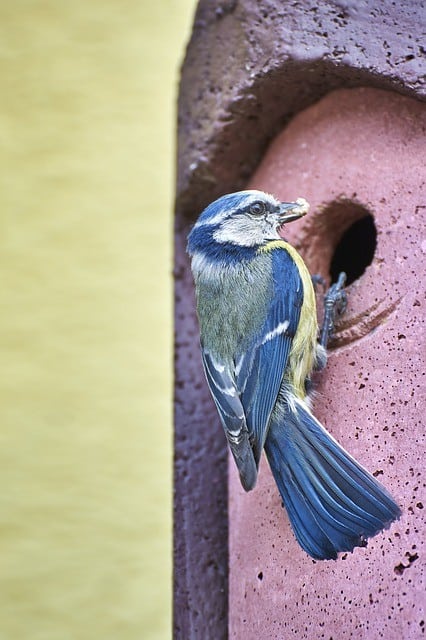
In addition to reducing the crop, the birds often damage the cherries they eat. They are one of the worst pests that can hit our cherry trees.
For control you can hang pieces of shiny metal or tin sheets that move in the wind from the branches. Compact discs work too.
- Use scarecrows. To know more: The best scarecrows for your garden.
Black aphid (Myzus cerasi)
Symptoms: Causesthe rolling of leaves and tender shoots.
Control and management: For its control, it is recommended to apply potassium soap and neem oil.
Cherry fruit fly (Rhagoletis cerasi)
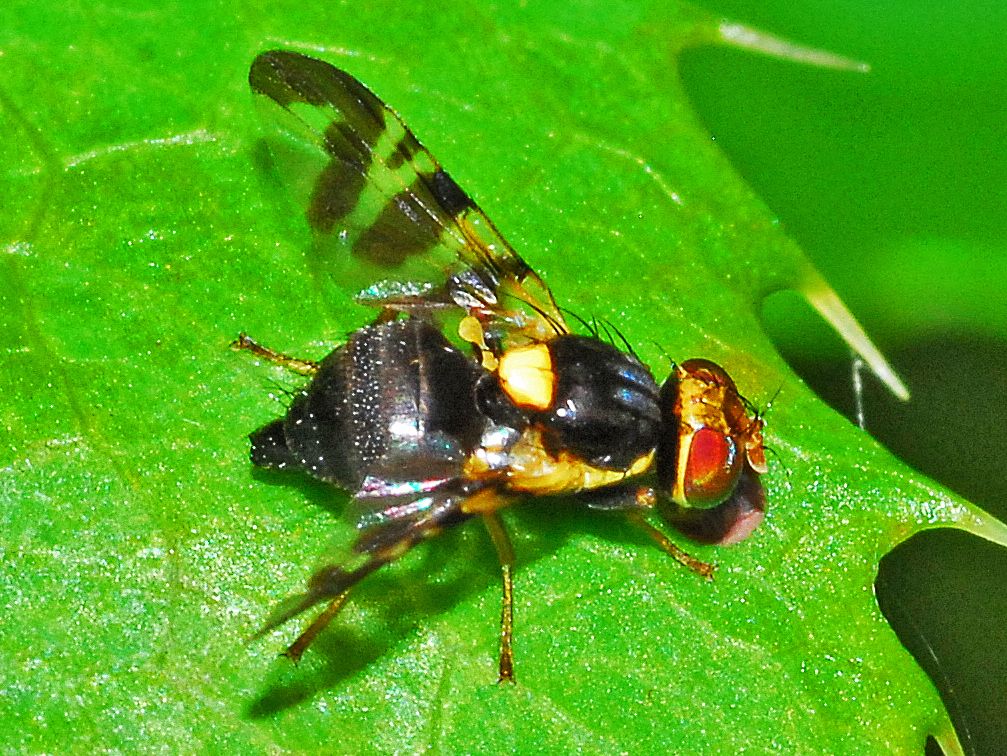
Symptoms: They laytheir eggs in the pulp of the cherry, causing it to change color. The larvae feed on the juice of the fruits.
Control and management: For its control, yellow traps or containersso that they adhere.
In addition, ecological alternatives can be used, such as applying 1% potassium soap sprayed with rainwater or distilled water to the underside of the leaves.
Peach branch borer, Anarsia lineatella
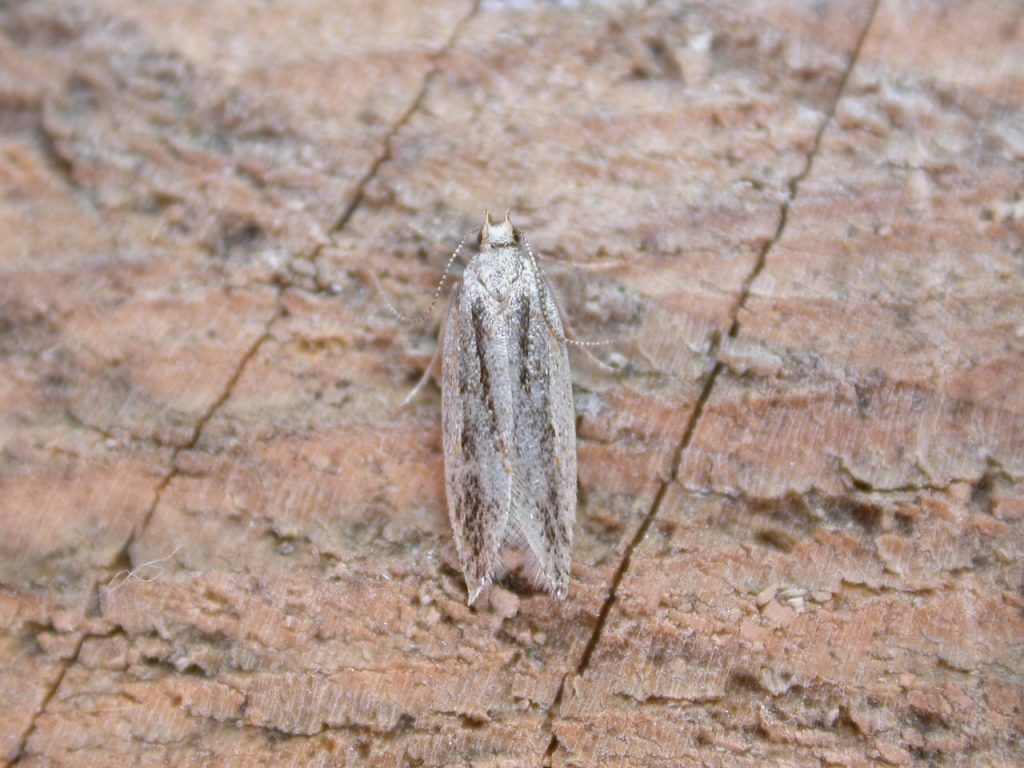
Symptoms: Death of shoot tips; feeding damage to fruit, usually at stem end; the larvae are dark brown and white with ablack; the adult insect is a gray-brown moth
Cause: Insect. Peach twig borersoverwinter as larvae in a specialized cell known as a hibernaculum.
Overwintering sites are in rough areas of the bark of 1-4 year old wood in the crotch of branches.
Control and management: The most effective treatment method is the application of insecticides at the time of flowering.
Acceptable organic insecticides are Bacillus thuringiensis or Entrust.
Infestations can also be treated with suitable organophosphate or pyrethroid insecticides.
Western cherry fruit fly, Rhagoletis indifferens
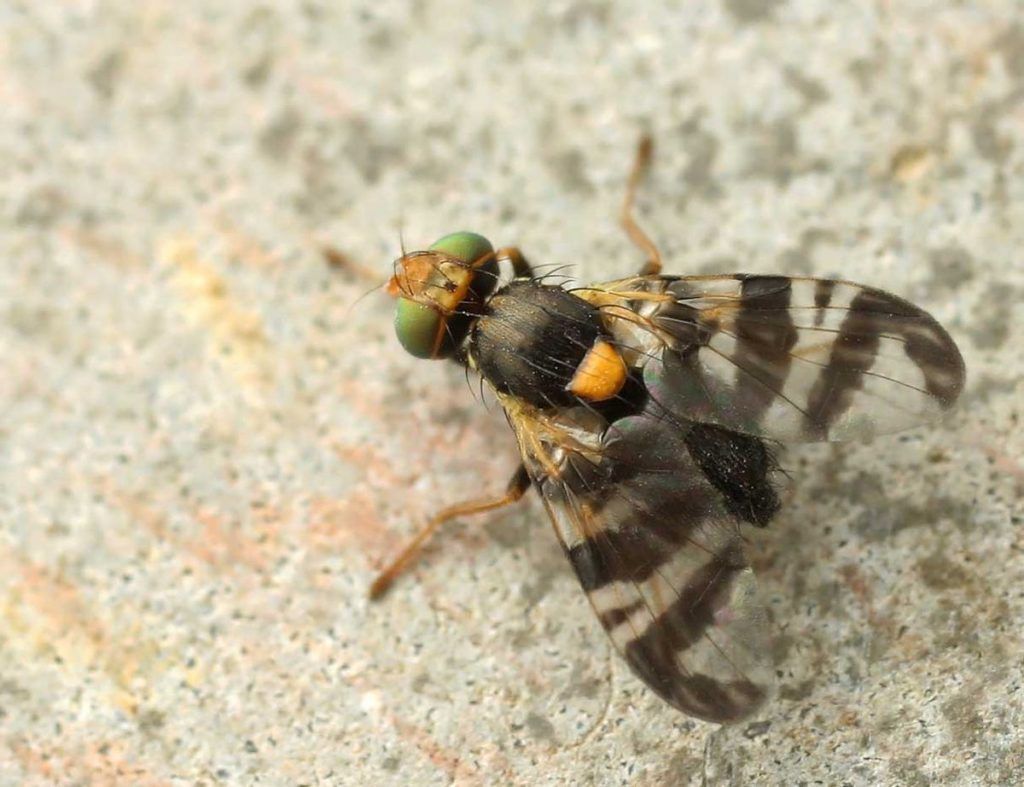
Symptoms: The fruit is soft and contains a singlewhite worm. The adult insect is a fly with a black body andwhiteon the abdomen and a distinctive pattern of dark bands on its wings.
Cause: Insect. The western cherry fruit fly is a potentially damaging pest in all western US states; high populations may result in a maggot being found in every fruit
Control and Management: In commercial cherry orchards, western cherry fruit fly should be monitored using yellow sticky traps, one with an ammonium carbonate lure being the most effective.
The insect is a quarantine pest and if a single infested fruit is found, treatment is warranted – even if no adults have been found in the sticky traps.
Chemical treatments should be timed to target mature females that are laying eggs in their particular region; recommended chemicals include spinosad, carbaryl, malathion, and acetamiprid.
Farmers should also treat trees to help control this damaging pest.
Spider mites (for example, the two-spotted spider), Tetranychus urticae
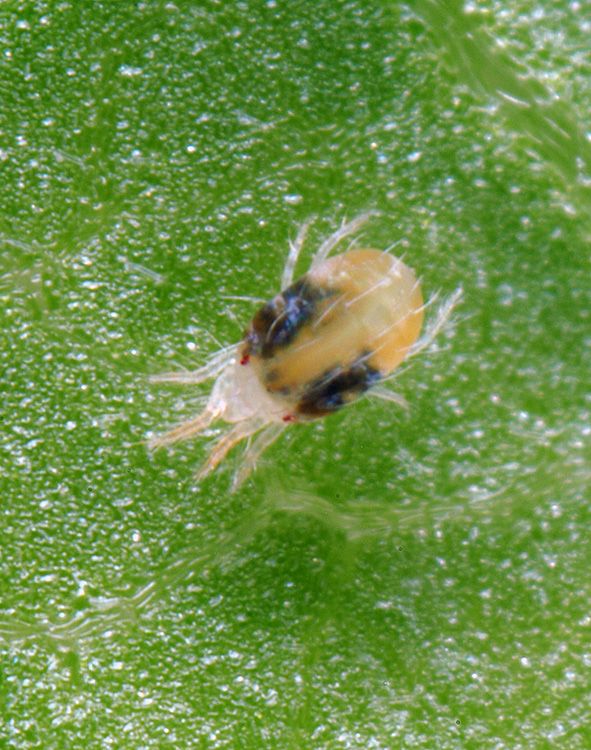
Symptoms: Leaves flecked with yellow; leaves may appear tan.
Cobwebs covering the leaves.
Mites may be visible as tiny moving dots on webs or the undersides of leaves, best seen using a hand lens; they are usually not detected until there are visible symptoms on the plant. The leaves turn yellow and may fall off the plant.
Cause: Arachnid. Mites thrive in dusty conditions; plants with water stress are more likely to be attacked.
Management and Control: In the garden or orchard, spraying plants with a strong stream of water can help reduce the buildup of spider mite populations.
If the mites become troublesome, apply insecticidal soap or 1% horticultural oil to the plants.
Some chemical insecticides can increase mite populations by killing their natural enemies and promoting their reproduction.
References and complementary bibliography:

![Photo of Potato Beetle: [Identification, Elimination and Prevention]](https://www.complete-gardening.com/wp-content/uploads/2022/08/potato-beetle-identification-elimination-and-prevention-390x220.jpg)
![Photo of Sowing Cabbage: [Growing, Care, Irrigation, Substrate and Pests]](https://www.complete-gardening.com/wp-content/uploads/2022/08/sowing-cabbage-growing-care-irrigation-substrate-and-pests-390x220.jpg)
